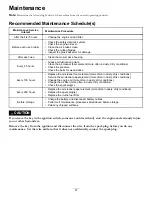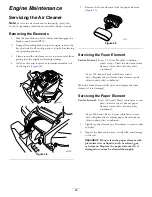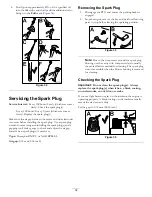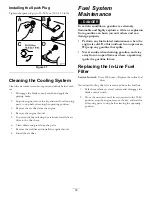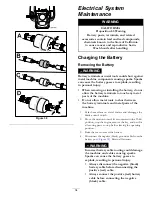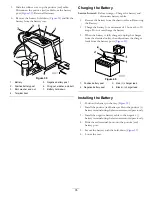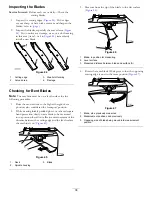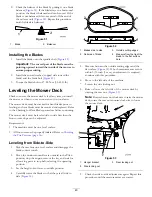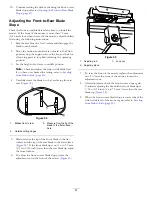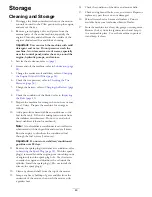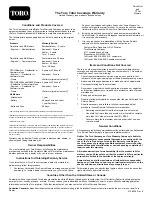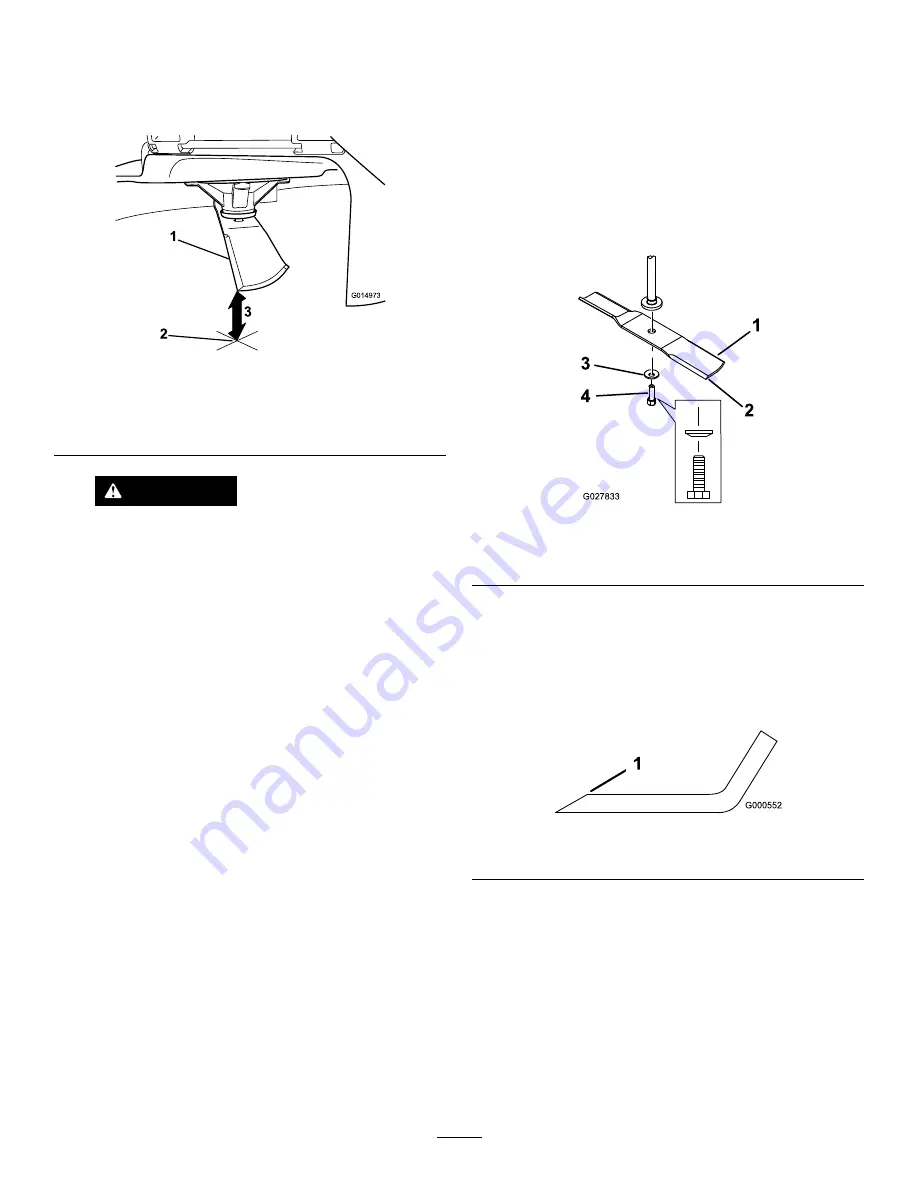
5.
Measure from the tip of the blade to the flat surface
(
.
Note:
The variance should be no more than 3 mm
(1/8 inch).
G014973
1
2
3
Figure 48
1.
Opposing blade edge, in position for measuring
2.
Level surface
3.
Second measured distance between blade and surface (B)
WARNING
A blade that is bent or damaged could break
apart and could seriously injure or kill you or
bystanders.
•
Always replace bent or damaged blade
with a new blade.
•
Never file or create sharp notches in the
edges or surfaces of blade.
A.
If the difference between A and B is greater than 3
mm (1/8 inch) replace the blade with a new blade.
Refer to Removing the Blades and Installing the
Blades.
Note:
If a bent blade is replaced with a new one
and the dimension obtained continues to exceed 3
mm (1/8 inch), the blade spindle could be bent.
Contact an Authorized Toro Dealer for service.
B.
If the variance is within constraints, move to the
next blade..
Repeat this procedure on each blade.
Removing the Blades
The blades must be replaced if a solid object is hit, if the
blade is out of balance, or the blade is bent. To ensure
optimum performance and continued safety conformance
of the machine, use genuine Toro replacement blades.
Replacement blades made by other manufacturers may result
in non-conformance with safety standards.
Hold the blade end using a rag or thickly-padded glove.
Remove the blade bolt, curved washer, and blade from the
spindle shaft (
G027833
Figure 49
1.
Sail area of blade
3.
Curved washer
2.
Blade
4.
Blade bolt
Sharpening the Blades
1.
Use a file to sharpen the cutting edge at both ends of
the blade (
). Maintain the original angle. The
blade retains its balance if the same amount of material
is removed from both cutting edges.
Figure 50
1.
Sharpen at original angle
39
Summary of Contents for TimeCutter SS 5000
Page 49: ...Schematics Electrical Diagram Rev A 49 ...
Page 50: ...Notes 50 ...
Page 51: ...Notes 51 ...



